For Immediate Release
August 31, 2012
EXECUTIVE ORDER
IMPROVING ACCESS TO MENTAL HEALTH SERVICES FOR VETERANS, SERVICE MEMBERS, AND MILITARY FAMILIES
By the authority vested in me as President by the Constitution and the
laws of the United States of America, I hereby order as follows:
Section 1. Policy. Since September 11, 2001, more than two
million service members have deployed to Iraq or Afghanistan. Long
deployments and intense combat conditions require optimal support for
the emotional and mental health needs of our service members and their
families. The need for mental health services will only increase in the
coming years as the Nation deals with the effects of more than a decade
of conflict. Reiterating and expanding upon the commitment outlined in
my Administration's 2011 report, entitled "Strengthening Our Military
Families," we have an obligation to evaluate our progress and continue
to build an integrated network of support capable of providing effective
mental health services for veterans, service members, and their
families. Our public health approach must encompass the practices of
disease prevention and the promotion of good health for all military
populations throughout their lifespans, both within the health care
systems of the Departments of Defense and Veterans Affairs and in local
communities. Our efforts also must focus on both outreach to veterans
and their families and the provision of high quality mental health
treatment to those in need. Coordination between the Departments of
Veterans Affairs and Defense during service members' transition to
civilian life is essential to achieving these goals.
Ensuring that all veterans, service members (Active, Guard, and Reserve
alike), and their families receive the support they deserve is a top
priority for my Administration. As part of our ongoing efforts to
improve all facets of military mental health, this order directs the
Secretaries of Defense, Health and Human Services, Education, Veterans
Affairs, and Homeland Security to expand suicide prevention strategies
and take steps to meet the current and future demand for mental health
and substance abuse treatment services for veterans, service members,
and their families.
Sec. 2. Suicide Prevention. (a) By December 31, 2012, the
Department of Veterans Affairs, in continued collaboration with the
Department of Health and Human Services, shall expand the capacity of
the Veterans Crisis Line by 50 percent to ensure that veterans have
timely access, including by telephone, text, or online chat, to
qualified, caring responders who can help address immediate crises and
direct veterans to appropriate care. Further, the Department of
Veterans Affairs shall ensure that any veteran identifying him or
herself as being in crisis connects with a mental health professional or
trained mental health worker within 24 hours. The Department of
Veterans Affairs also shall expand the number of mental health
professionals who are available to see veterans beyond traditional
business hours.
(b) The Departments of Veterans Affairs and Defense shall jointly
develop and implement a national suicide prevention campaign focused on
connecting veterans and service members to mental health services. This
12 month campaign, which shall begin on September 1, 2012, will focus
on the positive benefits of seeking care and encourage veterans and
service members to proactively reach out to support services.
(c) To provide the best mental health and substance abuse prevention,
education, and outreach support to our military and their family
members, the Department of Defense shall review all of its existing
mental health and substance abuse prevention, education, and outreach
programs across the military services and the Defense Health Program to
identify the key program areas that produce the greatest impact on
quality and outcomes, and rank programs within each of these program
areas using metrics that assess their effectiveness. By the end of
Fiscal Year 2014, existing program resources shall be realigned to
ensure that highly ranked programs are implemented across all of the
military services and less effective programs are replaced.
Sec. 3. Enhanced Partnerships Between the Department of Veterans Affairs and Community Providers.
(a) Within 180 days of the date of this order, in those service areas
where the Department of Veterans Affairs has faced challenges in hiring
and placing mental health service providers and continues to have
unfilled vacancies or long wait times, the Departments of Veterans
Affairs and Health and Human Services shall establish pilot projects
whereby the Department of Veterans Affairs contracts or develops formal
arrangements with community based providers, such as community mental
health clinics, community health centers, substance abuse treatment
facilities, and rural health clinics, to test the effectiveness of
community partnerships in helping to meet the mental health needs of
veterans in a timely way. Pilot sites shall ensure that consumers of
community-based services continue to be integrated into the health care
systems of the Department of Veterans Affairs. No fewer than 15 pilot
projects shall be established.
(b) The Department of Veterans Affairs shall develop guidance for its
medical centers and service networks that supports the use of community
mental health services, including telehealth services and substance
abuse services, where appropriate, to meet demand and facilitate access
to care. This guidance shall include recommendations that medical
centers and service networks use community-based providers to help meet
veterans' mental health needs where objective criteria, which the
Department of Veterans Affairs shall define in the form of specific
metrics, demonstrate such needs. Such objective criteria should include
estimates of wait-times for needed care that exceed established
targets.
(c) The Departments of Health and Human Services and Veterans Affairs
shall develop a plan for a rural mental health recruitment initiative to
promote opportunities for the Department of Veterans Affairs and rural
communities to share mental health providers when demand is insufficient
for either the Department of Veterans Affairs or the communities to
independently support a full time provider.
Sec. 4. Expanded Department of Veterans Affairs Mental Health Services Staffing.
The Secretary of Veterans Affairs shall, by December 31, 2013, hire
and train 800 peer to peer counselors to empower veterans to support
other veterans and help meet mental health care needs. In addition, the
Secretary shall continue to use all appropriate tools, including
collaborative arrangements with community based providers, pay setting
authorities, loan repayment and scholarships, and partnerships with
health care workforce training programs to accomplish the Department of
Veterans Affairs' goal of recruiting, hiring, and placing 1,600 mental
health professionals by June 30, 2013. The Department of Veterans
Affairs also shall evaluate the reporting requirements associated with
providing mental health services and reduce paperwork requirements where
appropriate. In addition, the Department of Veterans Affairs shall
update its management performance evaluation system to link performance
to meeting mental health service demand.
Sec. 5. Improved Research and Development. (a) The lack of
full understanding of the underlying mechanisms of Post Traumatic Stress
Disorder (PTSD), other mental health conditions, and Traumatic Brain
Injury (TBI) has hampered progress in prevention, diagnosis, and
treatment. In order to improve the coordination of agency research into
these conditions and reduce the number of affected men and women
through better prevention, diagnosis, and treatment, the Departments of
Defense, Veterans Affairs, Health and Human Services, and Education, in
coordination with the Office of Science and Technology Policy, shall
establish a National Research Action Plan within 8 months of the date of
this order.
(b) The National Research Action Plan shall include strategies to
establish surrogate and clinically actionable biomarkers for early
diagnosis and treatment effectiveness; develop improved diagnostic
criteria for TBI; enhance our understanding of the mechanisms
responsible for PTSD, related injuries, and neurological disorders
following TBI; foster development of new treatments for these conditions
based on a better understanding of the underlying mechanisms; improve
data sharing between agencies and academic and industry researchers to
accelerate progress and reduce redundant efforts without compromising
privacy; and make better use of electronic health records to gain
insight into the risk and mitigation of PTSD, TBI, and related injuries.
In addition, the National Research Action Plan shall include
strategies to support collaborative research to address suicide
prevention.
(c) The Departments of Defense and Health and Human Services shall
engage in a comprehensive longitudinal mental health study with an
emphasis on PTSD, TBI, and related injuries to develop better
prevention, diagnosis, and treatment options. Agencies shall continue
ongoing collaborative research efforts, with an aim to enroll at least
100,000 service members by December 31, 2012, and include a plan for
long term follow up with enrollees through a coordinated effort with the
Department of Veterans Affairs.
Sec. 6. Military and Veterans Mental Health Interagency Task Force.
There is established an Interagency Task Force on Military and
Veterans Mental Health (Task Force), to be co chaired by the Secretaries
of Defense, Veterans Affairs, and Health and Human Services, or their
designated representatives.
(a) Membership. In addition to the Co-Chairs, the Task Force shall consist of representatives from:
(i) the Department of Education;
(ii) the Office of Management and Budget;
(iii) the Domestic Policy Council;
(iv) the National Security Staff;
(v) the Office of Science and Technology Policy;
(vi) the Office of National Drug Control Policy; and
(vii) such other executive departments, agencies, or offices as the Co-Chairs may designate.
A member agency of the Task Force shall designate a full time officer
or employee of the Federal Government to perform the Task Force
functions.
(b) Mission. Member agencies shall review relevant statutes,
policies, and agency training and guidance to identify reforms and take
actions that facilitate implementation of the strategies outlined in
this order. Member agencies shall work collaboratively on these
strategies and also create an inventory of mental health and substance
abuse programs and activities to inform this work.
(c) Functions.
(i) Not later than 180 days after the date of this order, the Task
Force shall submit recommendations to the President on strategies to
improve mental health and substance abuse treatment services for
veterans, service members, and their families. Every year thereafter,
the Task Force shall provide to the President a review of agency actions
to enhance mental health and substance abuse treatment services for
veterans, service members, and their families consistent with this
order, as well as provide additional recommendations for action as
appropriate. The Task Force shall define specific goals and metrics
that will aid in measuring progress in improving mental health
strategies. The Task Force will include cost analysis in the
development of all recommendations, and will ensure any new requirements
are supported within existing resources.
(ii) In addition to coordinating and reviewing agency efforts to
enhance veteran and military mental health services pursuant to this
order, the Task Force shall evaluate:
(1) agency efforts to improve care quality and ensure that the
Departments of Defense and Veterans Affairs and community based mental
health providers are trained in the most current evidence based
methodologies for treating PTSD, TBI, depression, related mental health
conditions, and substance abuse;
(2) agency efforts to improve awareness and reduce stigma for those needing to seek care; and
(3) agency research efforts to improve the prevention, diagnosis, and
treatment of TBI, PTSD, and related injuries, and explore the need for
an external research portfolio review.
(iii) In performing its functions, the Task Force shall consult with
relevant nongovernmental experts and organizations as necessary.
Sec. 7. General Provisions. (a) This order shall be implemented consistent with applicable law and subject to the availability of appropriations.
(b) Nothing in this order shall be construed to impair or otherwise affect:
(i) the authority granted by law to an executive department or agency, or the head thereof; or
(ii) the functions of the Director of the Office of Management and
Budget relating to budgetary, administrative, or legislative proposals.
(c) This order is not intended to, and does not, create any right or
benefit, substantive or procedural, enforceable at law or in equity by
any party against the United States, its departments, agencies, or
entities, its officers, employees, or agents, or any other person.
BARACK OBAMA
THE WHITE HOUSE,
August 31, 2012.
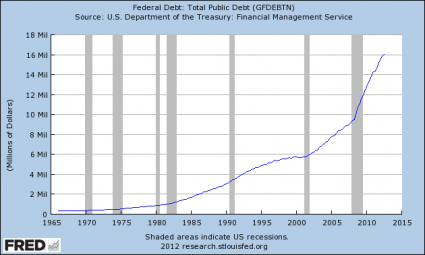
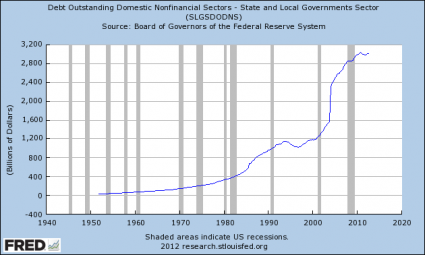
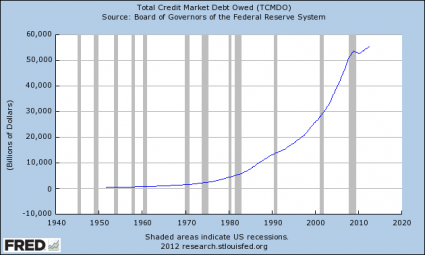
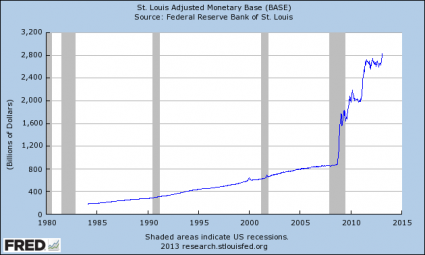
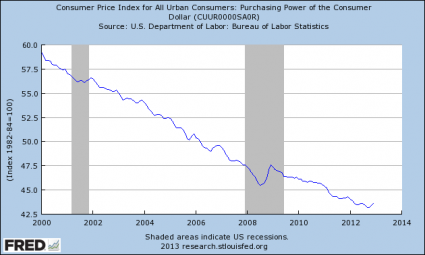
 Subscribe to feed
Subscribe to feed
